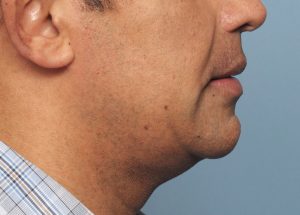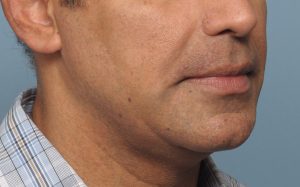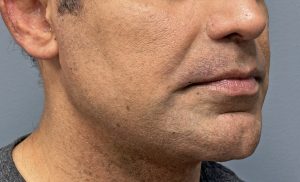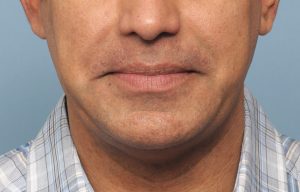Background: Chin implants have been and still are the most common form of aesthetic facial implant augmentation. Because of its placement on the most projecting part of the lower face, which creates a distinct transition from the neck below it, it has been stated that is a facial procedure that has the highest aesthetic value. (benefit vs effort required to do it) If that is an accurate statement then the total jawline implant has an almost similar aesthetic value as it augments the entire lower third of the face.
Many patients start the jaw augmentation journey with a chin implant. Not only is the chin implant more well known and is less invasive to place but its anterior projecting point is the most obvious evidence of a weak jaw. If the chin implant produces a satisfactory result, many patients may never progress beyond that lower facial aesthetic procedure.
But for others, even if the amount of chin augmentation is adequate, it creates the realization that the rest of the lower jaw would benefit by augmentation as well. The indwelling chin implant provides valuable information about the design of the front part of the custom jawline implant design. The back two-thirds of the jawline, however, has no such guidance and those dimensions must come from preoperative imaging of the patient and implant design experience.
Case Study: This male had a previous chin implant of the Type 1 square chin style of 8mm size. While it had a positive effect on chin projection he subsequently desired a more complete jaw augmentation effect.
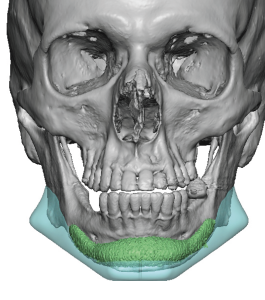
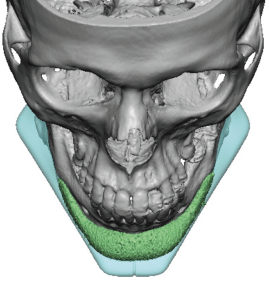
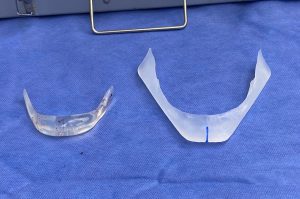
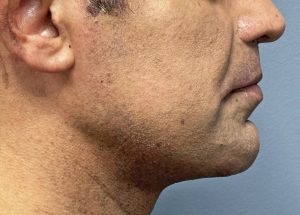
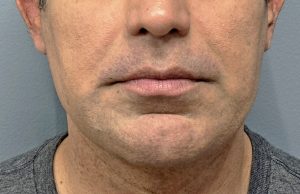
One interesting observation to make in his before and afters, because of his slight natural chin cleft notice that it has become rotated upward as the chin has had further advancement. And has also become a bit more apparent.
Key Points:
1) A previous chin implant patient is a common history of the contemporary custom jawline implant patient.
2) The existing chin implant provides valuable information to the front end of the custom jawline implant design.
3) In the thick tissue patient the effects of a jawline implant can be seen but sharp definition is rarely possible.
Dr. Barry Eppley
World-Renowned Plastic Surgeon





